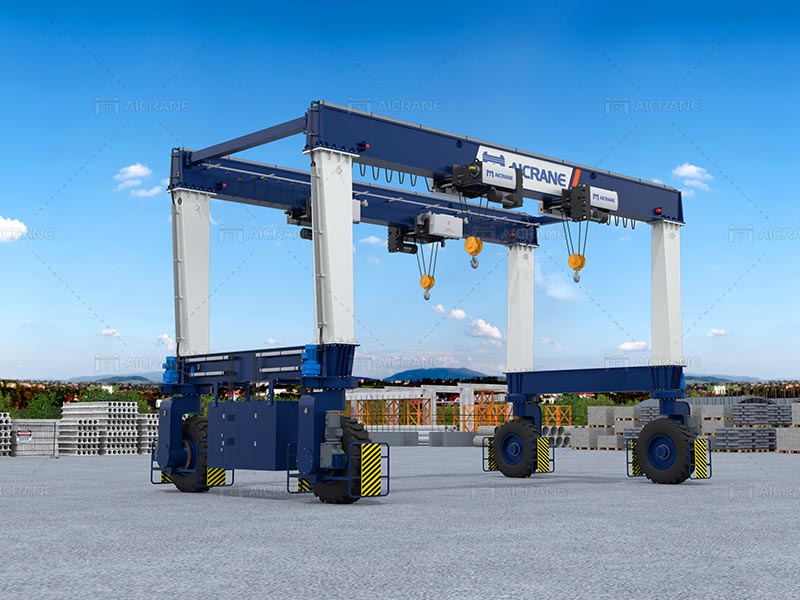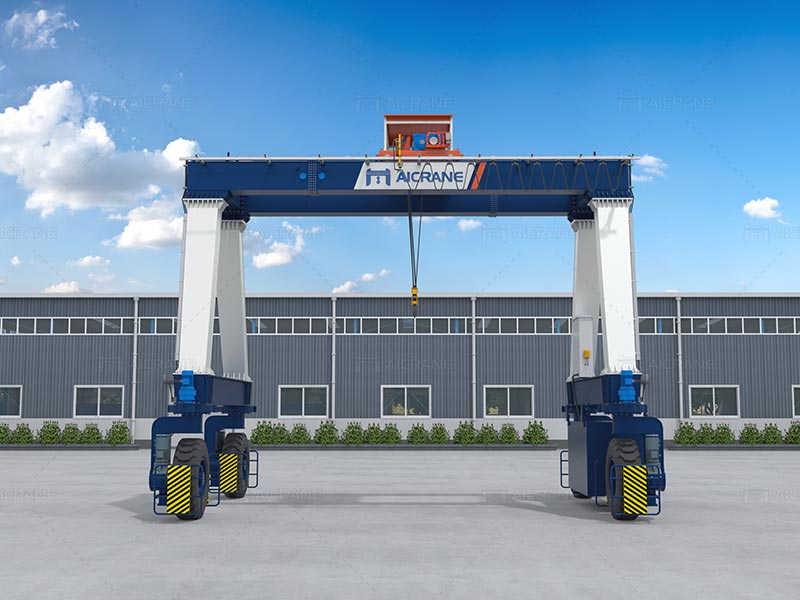Rubber Tyred Gantry (RTG) cranes are versatile and widely used in various industries, particularly in container terminals and intermodal facilities. These cranes are specifically designed for handling and transporting containers, large loads, or heavy equipment over short distances. Due to their mobility, flexibility, and ability to operate on rubber tires, RTG cranes offer significant advantages in port operations and other material handling environments. Understanding the rubber tyred gantry crane specifications and how to determine the right one for your application is crucial for optimizing efficiency and productivity.

Key Specifications of Rubber Tyred Gantry Cranes
When choosing a rubber tyred gantry crane, it is essential to understand the various specifications that define its capabilities. Below are the key specifications to consider:
- Lifting Capacity: The lifting capacity of an RTG crane refers to the maximum weight it can lift safely. RTGs are available in various capacities, ranging from 20 tons to 200 tons or more. The required lifting capacity depends on the weight of the loads or containers that need to be handled.
- Span Width: The span of an RTG crane is the distance between the two legs of the crane. Span width is typically measured in meters and can vary significantly depending on the application. For container handling in ports, the span is usually large enough to straddle multiple rows of containers (usually 5-8 containers wide).
- Lifting Height: The lifting height is the maximum distance the crane’s hook or spreader can reach vertically. In container terminals, the lifting height should be sufficient to stack containers in multiple tiers (e.g., 5+1, 6+1, etc.). The “+1” indicates an additional height clearance for safe handling.
- Wheelbase and Steering Modes: The wheelbase of an RTG crane is the distance between the front and rear wheels. It determines the maneuverability and turning radius of the gantry crane. RTG cranes come with different steering modes, such as four-wheel steering, crab steering, and carousel steering, enhancing their mobility in confined spaces.
- Hoisting Speed: The hoisting speed indicates how fast the crane can lift or lower loads. A higher hoisting speed improves operational efficiency, especially when handling a high volume of containers. However, it is crucial to balance speed with safety and control.
- Travel Speed: The travel speed refers to the speed at which the RTG crane moves on rubber tires across the yard or terminal. Faster travel speeds allow for quicker movement between different positions, but this must be carefully managed to avoid accidents or collisions.
- Power Supply: RTG cranes can be powered by different energy sources. Traditionally, they have been powered by diesel engines. However, modern RTGs can be powered by electric motors (eRTGs) or hybrid systems. Electric RTGs are environmentally friendly and reduce operational costs, while diesel-powered RTGs provide greater flexibility.
- Control Systems: RTG cranes can be operated manually or via remote control. Advanced control systems, including anti-sway mechanisms and automation, are becoming increasingly popular to enhance safety, precision, and efficiency.
- Safety Features: Safety is a paramount consideration when selecting an RTG crane. Look for safety features like overload protection, anti-sway control, emergency stop systems, collision avoidance systems, and warning lights and alarms.

Determining the Right Rubber Tyred Gantry Crane
Selecting the right rubber tyred gantry crane requires careful consideration of several factors that align with your specific application needs. Here are the key steps to determine the most suitable RTG crane:
1. Evaluate Your Application Needs
Start by evaluating the specific requirements of your operation. Consider the type of loads or containers you will be handling, their weight and dimensions, and the frequency of lifting operations. If you are working in a container yard, determine the number of containers that need to be stacked and the width of container rows to define the span width and lifting height requirements. Learn more about this mobile type gantry cranes: https://aicraneliftingsolution.com/gantry-cranes/mobile/
2. Consider the Operating Environment
The operating environment plays a significant role in determining the specifications of an RTG crane. If you are working in a confined space, such as a busy port or a small yard, opt for an RTG crane with a shorter wheelbase and advanced steering modes for better maneuverability. Additionally, consider the terrain and ground conditions; RTG cranes with large, durable rubber tires are suitable for uneven or soft surfaces.
3. Choose the Appropriate Lifting Capacity
Selecting the right lifting capacity is crucial for safety and efficiency. Always choose an RTG crane with a capacity that slightly exceeds your maximum load weight to avoid overloading and ensure safe operations. For container handling, it is common to use RTGs with capacities between 40 to 65 tons, depending on the number of containers being moved and their weight.
4. Decide on Power Supply Options
Modern RTG cranes offer multiple power supply options, including diesel, electric, and hybrid. Electric RTGs (eRTGs) are gaining popularity due to their environmental benefits and reduced operating costs. They eliminate diesel emissions, reduce noise, and lower fuel consumption. However, they require an electrification infrastructure, such as cable reel or busbar systems, which might not be available in all settings.
5. Evaluate Hoisting and Travel Speed
The hoisting and travel speeds of an RTG crane should align with the pace of your operations. For high-volume container handling, choose a crane with higher speeds to improve efficiency. However, it is essential to balance speed with control and safety to prevent accidents and ensure smooth operations.
6. Consider Safety Features and Automation
Safety is non-negotiable when operating heavy lifting equipment like RTG cranes. Ensure that the crane is equipped with essential safety features, such as load limiters, anti-sway systems, and collision avoidance systems. Automation options, such as remote control and semi-automated operation, can also enhance safety and precision.
7. Understand Maintenance and After-Sales Support
Regular maintenance is crucial for the longevity and performance of an RTG crane. Choose a manufacturer or supplier that offers comprehensive after-sales support, including spare parts, maintenance services, and technical support. Some suppliers offer remote monitoring and diagnostics, allowing for proactive maintenance and minimizing downtime.
8. Cost Considerations and ROI Analysis
Finally, consider the cost of the RTG crane, including its purchase price, installation, and operating costs. Conduct a return on investment (ROI) analysis to determine the long-term benefits and savings from using a particular type of RTG crane. Electric RTGs, for example, may have a higher upfront cost but offer significant savings in fuel and maintenance over time.
Conclusion
Rubber tyred gantry cranes are invaluable assets for container terminals, intermodal yards, and various other industries that require efficient material handling solutions. By understanding the key specifications of RTG cranes—such as lifting capacity, span width, lifting height, power supply, and safety features—you can make an informed decision that aligns with your specific operational needs. Proper evaluation of the operating environment, load requirements, and safety considerations is essential to ensure optimal performance, safety, and cost-effectiveness.